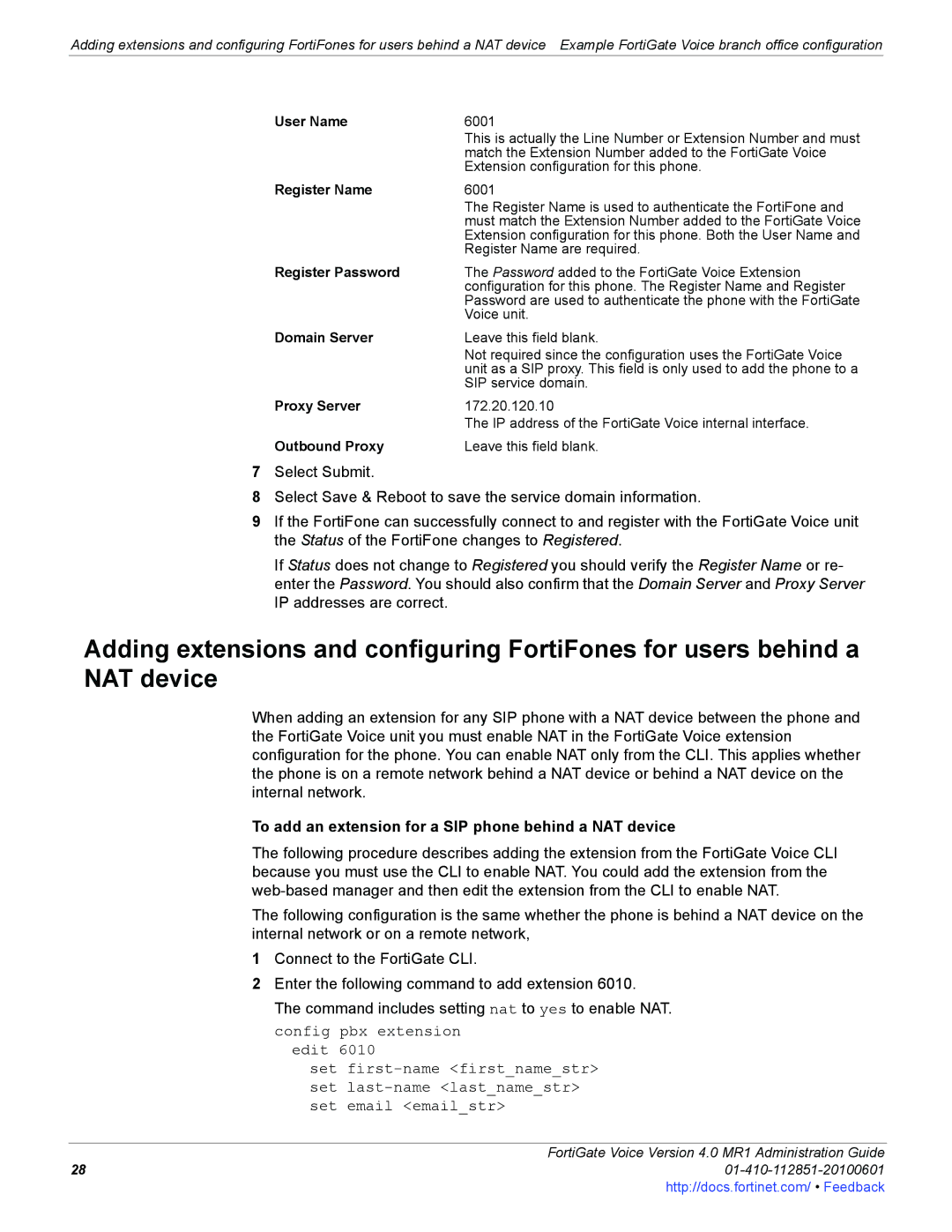
Adding extensions and configuring FortiFones for users behind a NAT device Example FortiGate Voice branch office configuration
User Name | 6001 |
| This is actually the Line Number or Extension Number and must |
| match the Extension Number added to the FortiGate Voice |
| Extension configuration for this phone. |
Register Name | 6001 |
| The Register Name is used to authenticate the FortiFone and |
| must match the Extension Number added to the FortiGate Voice |
| Extension configuration for this phone. Both the User Name and |
| Register Name are required. |
Register Password | The Password added to the FortiGate Voice Extension |
| configuration for this phone. The Register Name and Register |
| Password are used to authenticate the phone with the FortiGate |
| Voice unit. |
Domain Server | Leave this field blank. |
| Not required since the configuration uses the FortiGate Voice |
| unit as a SIP proxy. This field is only used to add the phone to a |
| SIP service domain. |
Proxy Server | 172.20.120.10 |
| The IP address of the FortiGate Voice internal interface. |
Outbound Proxy | Leave this field blank. |
7Select Submit.
8Select Save & Reboot to save the service domain information.
9If the FortiFone can successfully connect to and register with the FortiGate Voice unit the Status of the FortiFone changes to Registered.
If Status does not change to Registered you should verify the Register Name or re- enter the Password. You should also confirm that the Domain Server and Proxy Server IP addresses are correct.
Adding extensions and configuring FortiFones for users behind a NAT device
When adding an extension for any SIP phone with a NAT device between the phone and the FortiGate Voice unit you must enable NAT in the FortiGate Voice extension configuration for the phone. You can enable NAT only from the CLI. This applies whether the phone is on a remote network behind a NAT device or behind a NAT device on the internal network.
To add an extension for a SIP phone behind a NAT device
The following procedure describes adding the extension from the FortiGate Voice CLI because you must use the CLI to enable NAT. You could add the extension from the
The following configuration is the same whether the phone is behind a NAT device on the internal network or on a remote network,
1Connect to the FortiGate CLI.
2Enter the following command to add extension 6010.
The command includes setting nat to yes to enable NAT. config pbx extension
edit 6010
set
FortiGate Voice Version 4.0 MR1 Administration Guide
2801-410-112851-20100601http://docs.fortinet.com/ • Feedback
